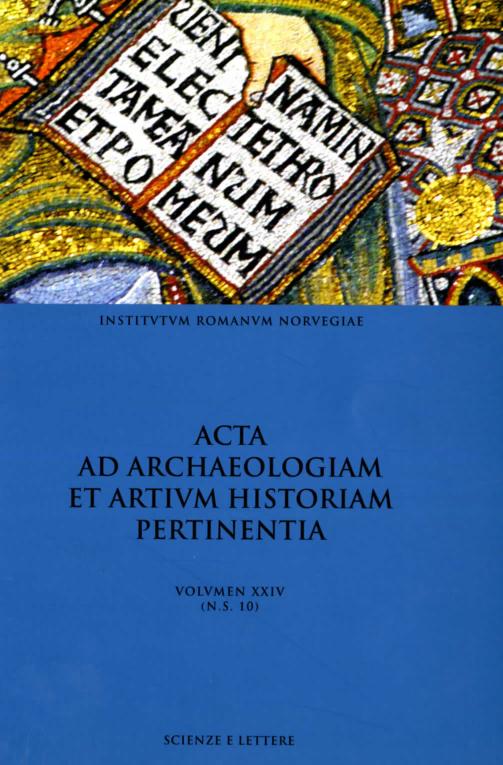Visual and Functional Aspects of Inscriptions in Early Church Floors
DOI:
https://doi.org/10.5617/acta.5776Abstract
Floor mosaics in early churches often display inscriptions of various kinds: names and labels, artists’ signatures, donor inscriptions, longer epigrams and, more rarely, Biblical quotations. Examining a selection of monuments of the fourth to sixth centuries, from both East and West, this paper discusses visual aspects of design, layout and framing, the functions of inscriptions and the relationship of text to image. While some examples appear to be representative for general tendencies in the period, others are unique and generalizations cannot be drawn from them. The paper demonstrates that the floor inscriptions in early churches had many purposes: they labeled figures, explained scenes, commemorated benefactors. Even a random selection of inscriptions shows that care was taken to make the words integral to the mosaic decoration, both aesthetically and conceptually. Placed in the “humblest” part of the church, the floor inscriptions may offer a first key to unlocking the cosmic meaning of the sacred space of the church.How to Cite
Kiilerich, B. (2017) “Visual and Functional Aspects of Inscriptions in Early Church Floors”, Acta ad archaeologiam et artium historiam pertinentia, 24(10 N.S.), pp. 45–63. doi: 10.5617/acta.5776.
Issue
Section
Articles
License

This work is licensed under a Creative Commons Attribution-NonCommercial 4.0 International License.
Authors who publish with this journal agree to the following terms:
- Authors retain copyright and grant the journal right of first publication with the work simultaneously licensed under a Creative Commons Attribution License that allows others to share the work with an acknowledgment of the work's authorship and initial publication in this journal.
- Authors are able to enter into separate, additional contractual arrangements for the non-exclusive distribution of the journal's published version of the work (e.g., post it to an institutional repository or publish it in a book), with an acknowledgement of its initial publication in this journal.
- Authors are permitted and encouraged to post their work online (e.g., in institutional repositories or on their website) prior to and during the submission process, as it can lead to productive exchanges, as well as earlier and greater citation of published work (See The Effect of Open Access).





